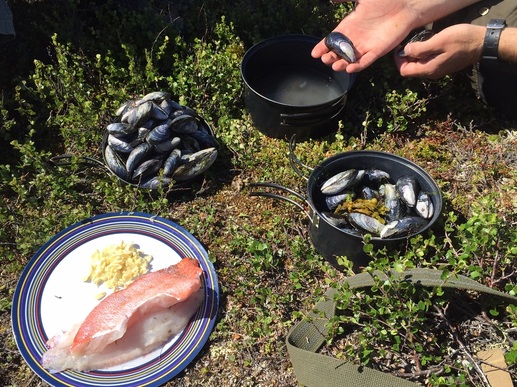 Recently, I’ve had the great fortune to visit Greenland. As luck would have it, a friend of mine is living there to studying fisheries as a Fulbright Scholar. When I got the invitation, I was very excited to see the mountains and fjords and to learn more about the Inuit, as well as the interesting political relationship between Greenland and its colonial ruler, Denmark. I was a bit less excited about the food. Whale blubber, seal meat, caribou, musk ox! For an American palate, the foods that comprise a traditional Greenlandic Inuit diet would be adventurous, to say the least. Also, given everything we’re told about nutrition, the traditional meat-heavy, fat-heavy, fruit-and-vegetable-free diet in Greenland seemed terribly unhealthy.
But what if the Inuit, with their traditional fatty meat and fish only diet, are actually healthier than those who eat a Western diet? Epidemiologic studies from the 90’s and prior showed lower rates of ischemic heart disease and better cholesterol and inflammatory marker profiles in Inuit eating a traditional diet compared to a Western diet. Increased westernization of diet and lifestyle was associated with worse cardiovascular risk profiles. This apparent paradox has been attributed to the high levels of heart-healthy, anti-inflammatory omega-3-fatty acids in the fatty fish and marine mammals that are a key part of the Inuit diet. In fact, Inuit eating a traditional diet have high rates of nosebleeds, a known side effect of high omega-3 consumption. I wondered if there must be a catch. Perhaps Inuits had lower rates of heart disease but developed scurvy, a connective tissue disease that comes from inadequate intake of vitamin C. European sailors from the past several hundred years famously prevented and treated scurvy with fresh fruit. But the Greenlandic Inuit, living on an ice sheet without a single tree, don’t have high rates of scurvy. Why? It turns out that fresh meat, and particularly fresh organ meat, have sufficient vitamin C to ward off scurvy. More recent studies call into question the evidence that Inuits have lower rates of ischemic heart disease than non-Inuits. But given that the traditional Inuit diet differs as radically as possible—in fact, is the exact opposite of what I recommend to my patients—without stunningly higher rates of heart disease and early death, raises a lot of questions. A traditional Inuit diet is not practical in America, but learning about the diet in Greenland reinforces the humility I feel when discussing healthy eating with my patients. I am a strong believer that every traditional diet--Mediterranean, Chinese, Greenlandic or otherwise—reflecting thousands of years of acquired wisdom, can be healthy for patients, even if the scientific studies in the Western tradition aren’t there to prove it yet. In the coming years, I am looking forward to working with my colleagues and patients to find tasty, satisfying, culturally appropriate and fun ways of eating that also promote good health. One size does not fit all when it comes to nutrition.
1 Comment
Mike Seward
9/19/2015 12:14:31 am
Very interesting and counter-intuitive! As you mentioned, one size definitely does not fit all- nutrition can be very personal.
Reply
Your comment will be posted after it is approved.
Leave a Reply. |
©2017 WeighingInBlog. All rights reserved. 401 Park Drive, Boston, MA




 RSS Feed
RSS Feed

